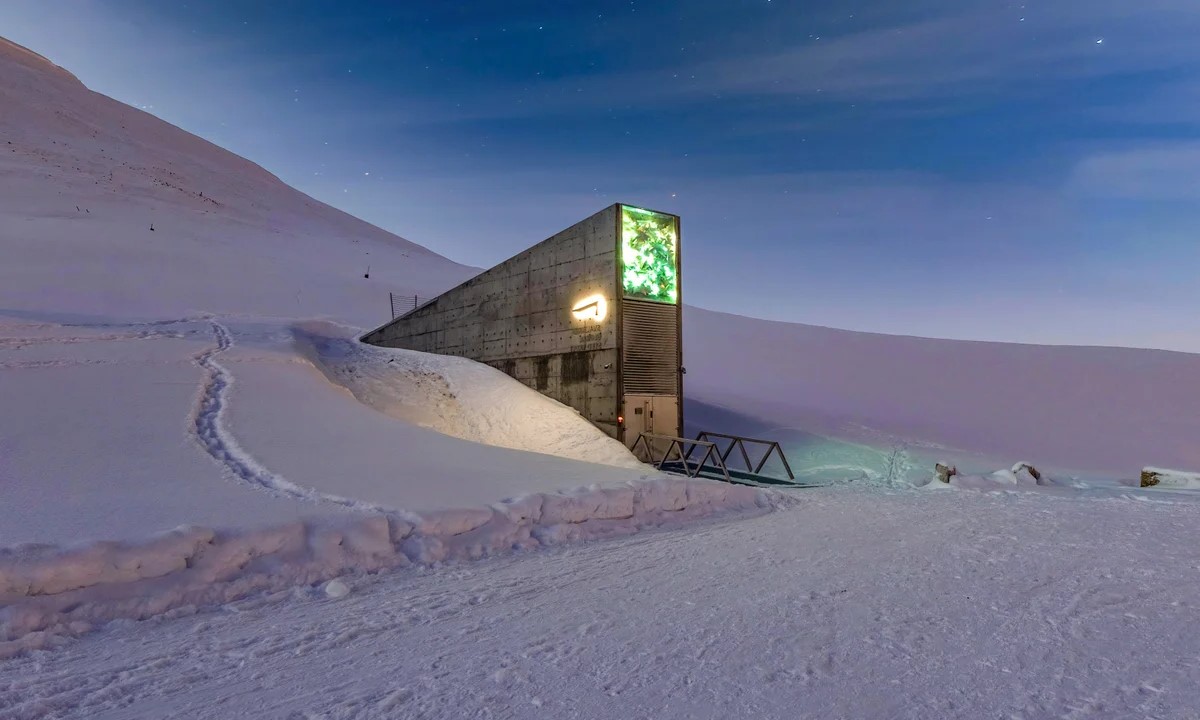Hidden Seed Vaults Of Svalbard: Global Crop Sanctuaries

Have you ever wondered where the world stores its most precious seeds? Svalbard holds the answer. Tucked away in the Arctic, the Svalbard Global Seed Vault serves as a backup for the planet's crop diversity. This vault, often called the "Doomsday Vault," safeguards seeds from all over the globe. In case of natural disasters, wars, or other crises, these seeds can help restart agriculture. Imagine a giant, frozen library of plant life, ensuring our future food supply. Curious about how this icy fortress operates and why it's so vital? Let's dive into the fascinating world of seed preservation.
Hidden Seed Vaults of Svalbard: Global Crop Sanctuaries
The Svalbard Global Seed Vault, often called the "Doomsday Vault," is a crucial safeguard for the world's agricultural diversity. Located on the remote Svalbard archipelago in Norway, this vault stores seeds from around the globe. Let's explore some of the key seed vaults that contribute to this global effort.
1. Svalbard Global Seed Vault
The most famous of all seed vaults, Svalbard, is situated in the Arctic Circle. It serves as a backup for the world's crop diversity, ensuring that seeds are safe from natural disasters, wars, and other threats.
- Location: Svalbard, Norway
- Capacity: Over 1 million seed samples
- Significance: Acts as a global insurance policy for food security
2. Millennium Seed Bank
Located in the United Kingdom, the Millennium Seed Bank is another significant player in preserving plant diversity. It focuses on wild plant species, which are crucial for maintaining ecosystems and supporting agriculture.
- Location: West Sussex, England
- Capacity: 2.4 billion seeds
- Significance: Largest ex-situ plant conservation project in the world
3. National Center for Genetic Resources Preservation
In the United States, this center plays a vital role in conserving genetic resources. It stores seeds, plant tissues, and even animal genetic material, making it a comprehensive repository.
- Location: Fort Collins, Colorado, USA
- Capacity: 600,000 seed samples
- Significance: Supports agricultural research and breeding programs
4. International Rice Gene Bank
Rice is a staple food for billions of people, making the International Rice Gene Bank incredibly important. This facility focuses on preserving rice varieties to ensure future food security.
- Location: Los Baños, Philippines
- Capacity: 127,000 rice samples
- Significance: Essential for rice breeding and research
5. Australian Grains Genebank
Australia's contribution to global seed conservation comes through the Australian Grains Genebank. It focuses on grains, which are vital for both human consumption and livestock feed.
- Location: Horsham, Victoria, Australia
- Capacity: 200,000 seed samples
- Significance: Supports grain research and breeding in Australia and globally
6. Vavilov Institute of Plant Industry
One of the oldest seed banks in the world, the Vavilov Institute, has a rich history of preserving plant genetic material. It was founded by the famous Russian botanist Nikolai Vavilov.
- Location: St. Petersburg, Russia
- Capacity: 325,000 seed samples
- Significance: Historical and scientific importance in plant genetics
7. International Potato Center
Potatoes are a global staple, and the International Potato Center focuses on preserving potato varieties. This ensures that diverse potato strains are available for future generations.
- Location: Lima, Peru
- Capacity: 15,000 potato samples
- Significance: Crucial for potato breeding and research
8. Nordic Genetic Resource Center
This center, also known as NordGen, plays a key role in preserving the genetic diversity of plants and animals in the Nordic countries. It collaborates closely with the Svalbard Global Seed Vault.
- Location: Alnarp, Sweden
- Capacity: 33,000 seed samples
- Significance: Supports agricultural sustainability in the Nordic region
9. International Maize and Wheat Improvement Center
Known as CIMMYT, this center focuses on maize and wheat, two of the world's most important crops. It works to improve crop yields and resilience through genetic diversity.
- Location: Texcoco, Mexico
- Capacity: 175,000 seed samples
- Significance: Essential for global food security and crop improvement
10. National Plant Germplasm System
The United States' National Plant Germplasm System is a network of seed banks and research centers. It aims to preserve the genetic diversity of plants important to agriculture and horticulture.
- Location: Various locations across the USA
- Capacity: Over 500,000 seed samples
- Significance: Supports agricultural research and breeding programs across the U.S.
Preserving Our Future
The Svalbard Global Seed Vault stands as a crucial safeguard for the world's crop diversity. Located in the Arctic, this vault protects seeds from natural disasters, war, and climate change. With over a million seed samples, it ensures that future generations have access to a wide variety of crops. This biodiversity is essential for food security and adapting to changing environments. By preserving seeds, we maintain the ability to grow resilient crops that can withstand new challenges. The vault is a testament to global cooperation, with countries from around the world contributing seeds. It symbolizes hope and preparedness for the future. Understanding the importance of seed vaults helps us appreciate the efforts to protect our food sources. The Svalbard Global Seed Vault is more than just a storage facility; it's a lifeline for humanity's agricultural heritage.

